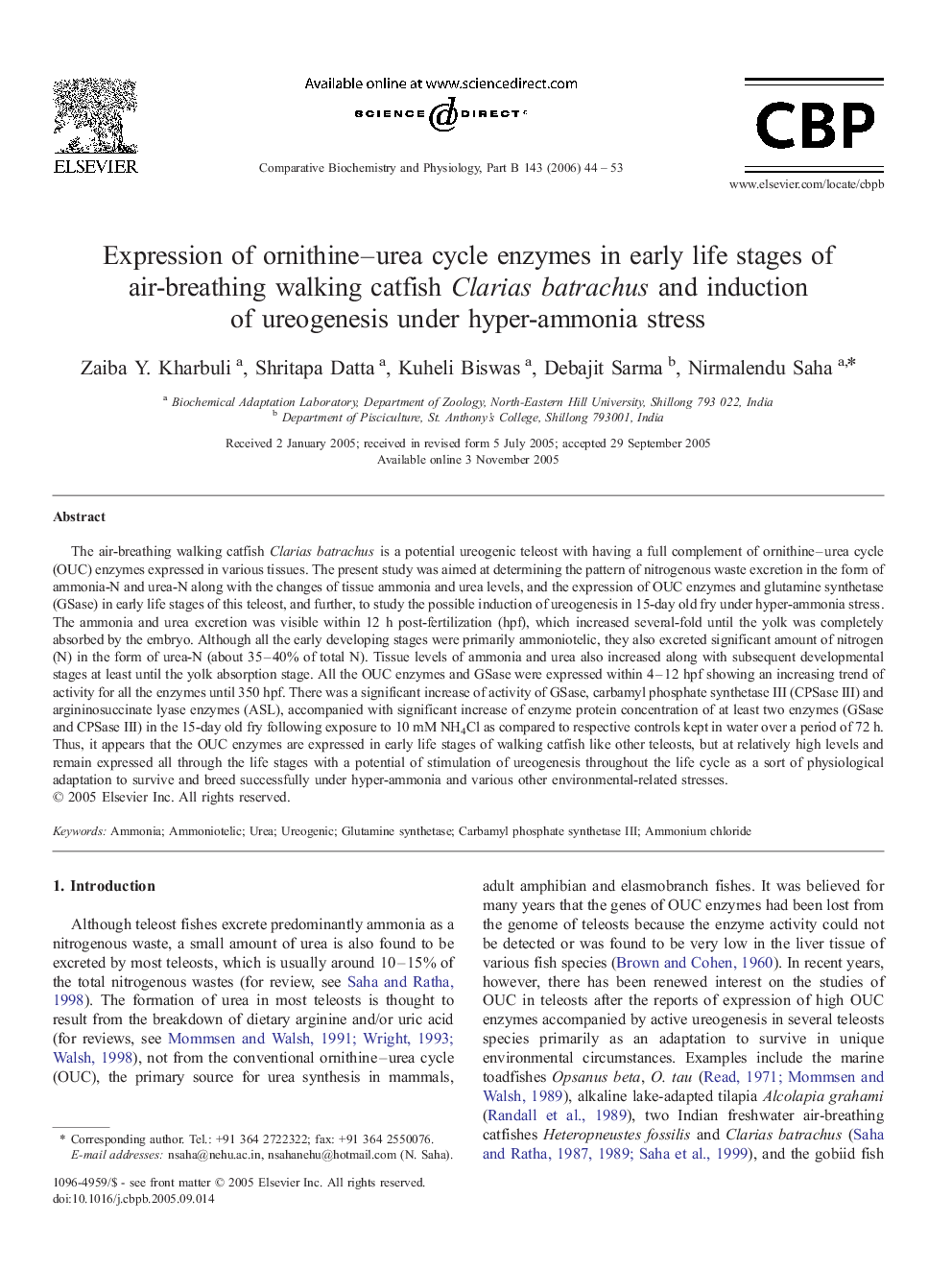| Article ID | Journal | Published Year | Pages | File Type |
|---|---|---|---|---|
| 1976442 | Comparative Biochemistry and Physiology Part B: Biochemistry and Molecular Biology | 2006 | 10 Pages |
Abstract
The air-breathing walking catfish Clarias batrachus is a potential ureogenic teleost with having a full complement of ornithine-urea cycle (OUC) enzymes expressed in various tissues. The present study was aimed at determining the pattern of nitrogenous waste excretion in the form of ammonia-N and urea-N along with the changes of tissue ammonia and urea levels, and the expression of OUC enzymes and glutamine synthetase (GSase) in early life stages of this teleost, and further, to study the possible induction of ureogenesis in 15-day old fry under hyper-ammonia stress. The ammonia and urea excretion was visible within 12 h post-fertilization (hpf), which increased several-fold until the yolk was completely absorbed by the embryo. Although all the early developing stages were primarily ammoniotelic, they also excreted significant amount of nitrogen (N) in the form of urea-N (about 35-40% of total N). Tissue levels of ammonia and urea also increased along with subsequent developmental stages at least until the yolk absorption stage. All the OUC enzymes and GSase were expressed within 4-12 hpf showing an increasing trend of activity for all the enzymes until 350 hpf. There was a significant increase of activity of GSase, carbamyl phosphate synthetase III (CPSase III) and argininosuccinate lyase enzymes (ASL), accompanied with significant increase of enzyme protein concentration of at least two enzymes (GSase and CPSase III) in the 15-day old fry following exposure to 10 mM NH4Cl as compared to respective controls kept in water over a period of 72 h. Thus, it appears that the OUC enzymes are expressed in early life stages of walking catfish like other teleosts, but at relatively high levels and remain expressed all through the life stages with a potential of stimulation of ureogenesis throughout the life cycle as a sort of physiological adaptation to survive and breed successfully under hyper-ammonia and various other environmental-related stresses.
Related Topics
Life Sciences
Biochemistry, Genetics and Molecular Biology
Biochemistry
Authors
Zaiba Y. Kharbuli, Shritapa Datta, Kuheli Biswas, Debajit Sarma, Nirmalendu Saha,
